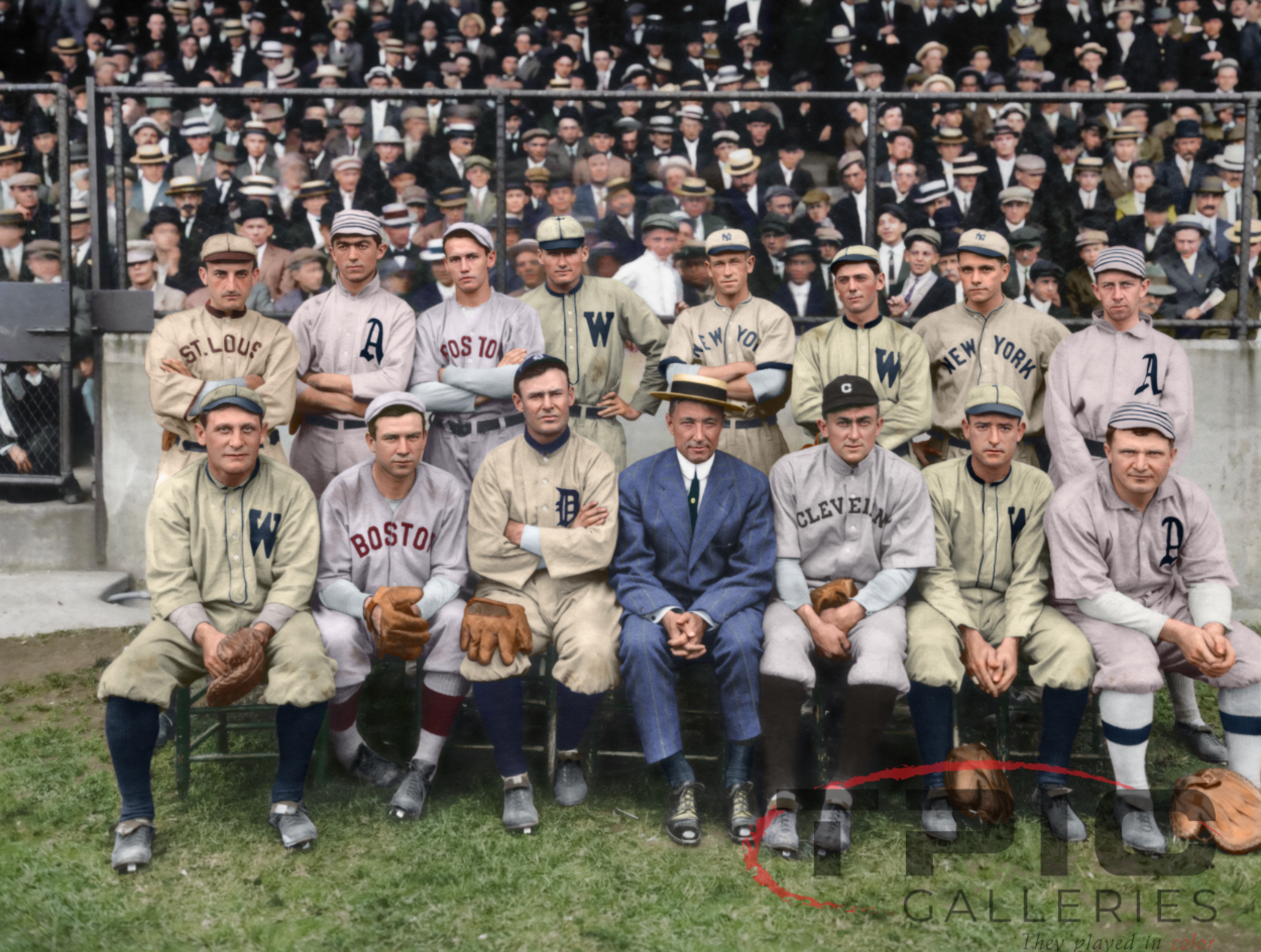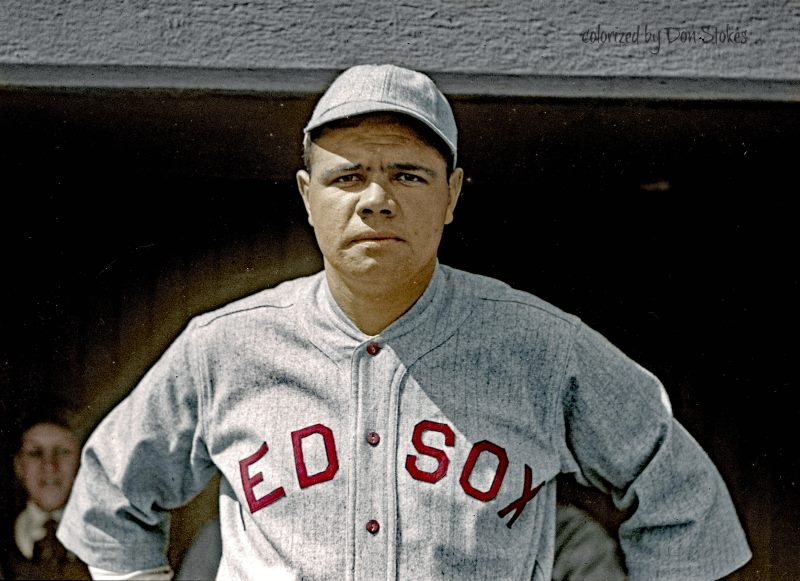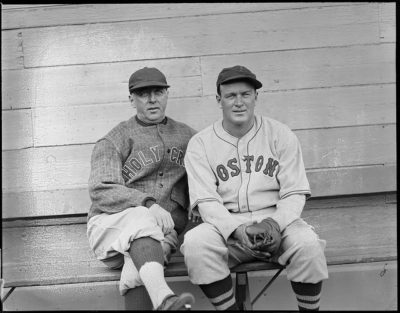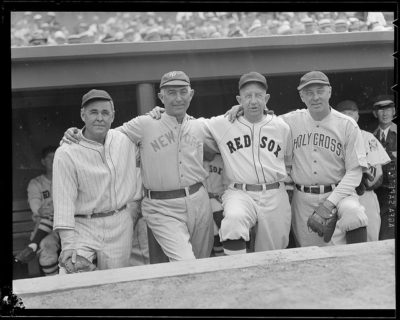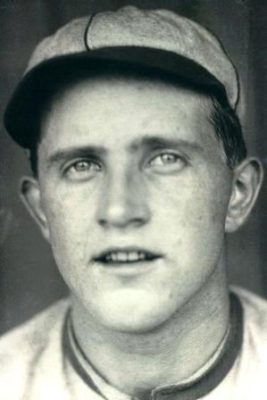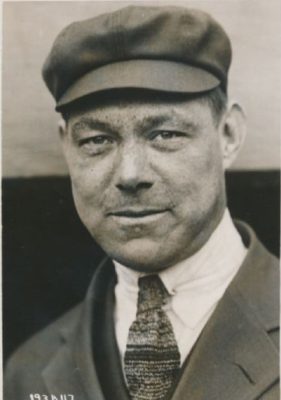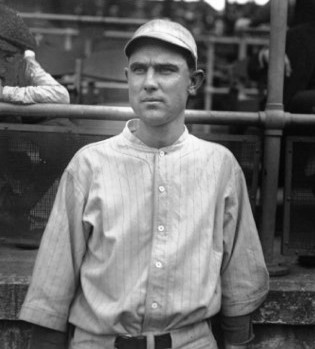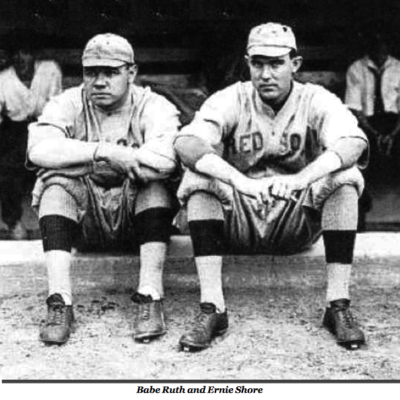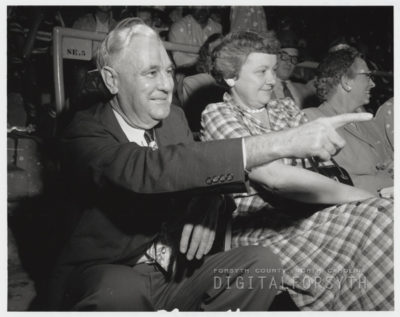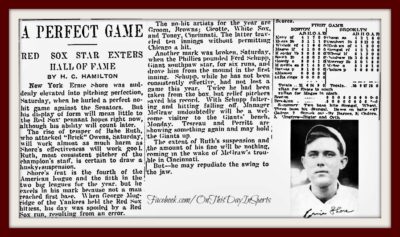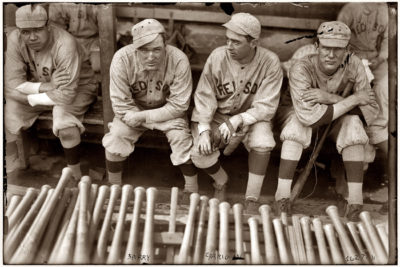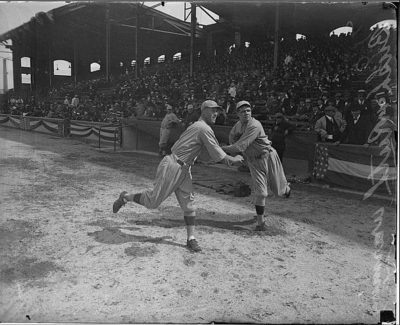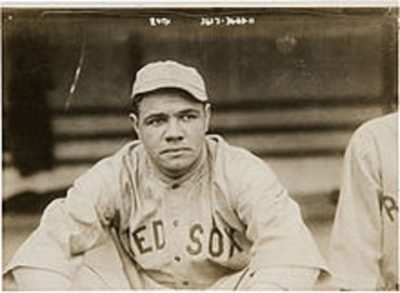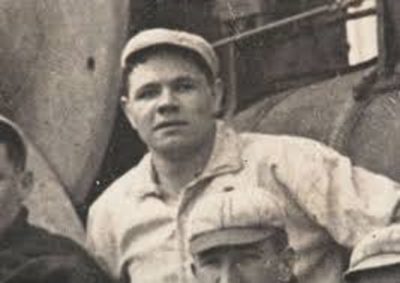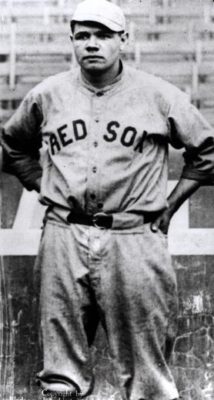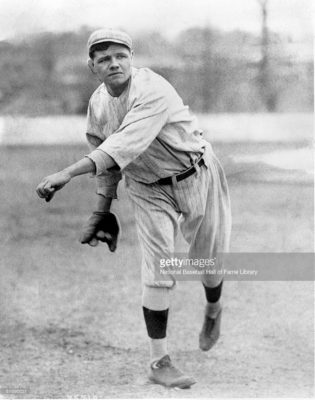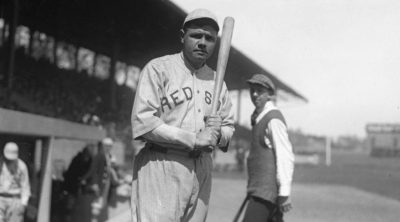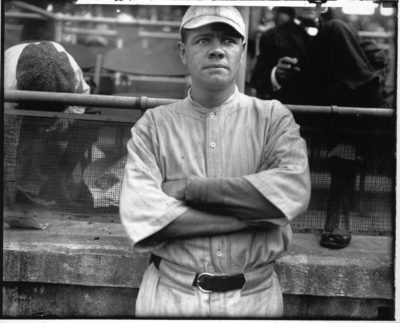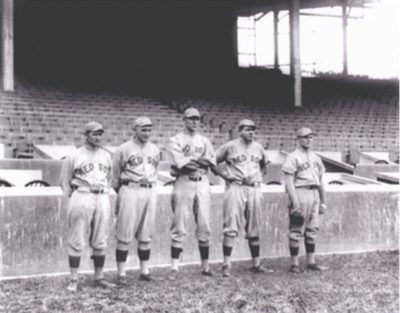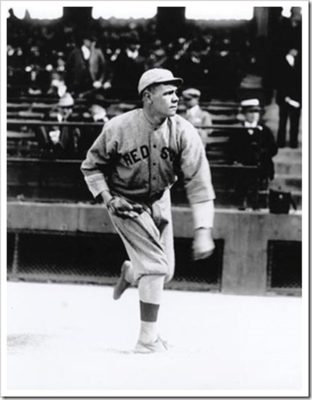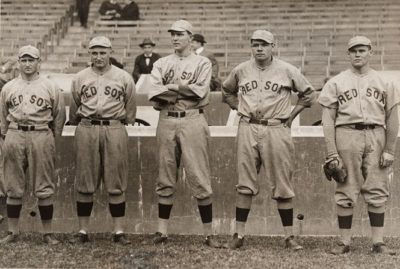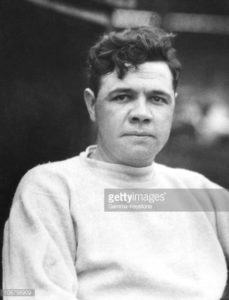Featured Photo Above:
Addie Joos Benefit Game, July 24, 1911
(Color Restoration by Chris Whitehouse of They Played in Color website)
Baseball History Comes Alive Now Ranked As a Top Five Website by Feedspot Among All Baseball History Websites and Blogs!
(Check out Feedspot's list of the Top 35 Baseball History websites and blogs)

Guest Submissions from Our Readers Always Welcome! Click for details
Subscribe to Baseball History Comes Alive! for automatic updates (sign-up block found in right side-bar)
As a Free Bonus for subscribing, you’ll get instant access to my two Special Reports: Memorable World Series Moments and Gary’s Handy Dandy World Series Reference Guide!
“Red Sox Babe Ruth and the Combined No-Hitter” Photo Gallery
Click on any image below to see photos in full size and to start Photo Gallery:
Question: Did Babe Ruth ever throw a no-hitter?
Answer: The short answer is: “Yeah…sort of. It’s in the record books.” The long answer is: “Well, you’ll just have to read on to learn the details and you can decide for yourself if he actually threw a no-hitter…”
I’ve written a lot about Babe Ruth over the years. I’ve covered the “Called Shot” in the 1932 World Series, the “Bellyache Heard Round the Word” in 1925, the “Home Run for little Johnny Sylvester” in the 1926 World Series, his feud with Lou Gehrig, and many more trials and tribulations from his personal life and his magnificent career. And why not? The Big Fella always makes for good copy. The stories are always so…Ruthian!
But here’s one today that sort of slipped under my baseball radar screen, and it’s one I think you’ll find interesting. I’m calling it:
Babe Ruth’s “Improbable” Combined No-Hitter!
There’s been 11 combined no-hitters in major league history, and I’m willing to bet you this one, involving pitcher George Herman “Babe” Ruth in 1917, is unique. The reason I chose to describe it as “improbable” is because the word is defined as, “unlikely, but real or true.” And that’s exactly what happened here, as you’ll soon see.
Babe Breaks In as a Pitcher
As we all know, Babe broke into the majors with the Red Sox as a pitcher, making his debut on July 11, 1914, at age 19. He posted a 2-1 record that year with a 3.91 ERA. After that modest start, it didn’t take long for the Bambino to establish himself as one of the game’s top pitchers, going 18-8 with a 2.44 ERA in 1915.
He followed that fine season with a “breakout” year in 1916. Check out these numbers: 23-12 (.657), leading the American League in ERA (1.75), Games Started (40), Shutouts (9), and Hits Allowed per 9 Innings (6.4). He pitched 323.2 innings that year, and—get this!—gave up exactly zero home runs. That has to be a record of some sort.
In the featured photo, we see a young Babe Ruth with the Red Sox, colorized beautifully by our resident baseball artist, Don Stokes.
Soon One of the Top Pitchers in the League
That takes us to 1917. In July of that year, Ruth was in the middle of another fine season, which, by season’s end, would see him go 24-13, with a 2.01 ERA, and a league-leading 35 complete games. (After three-straight outstanding seasons at the beginning of his career, it’s always interesting to speculate if he would have made the Hall of Fame as a pitcher.)
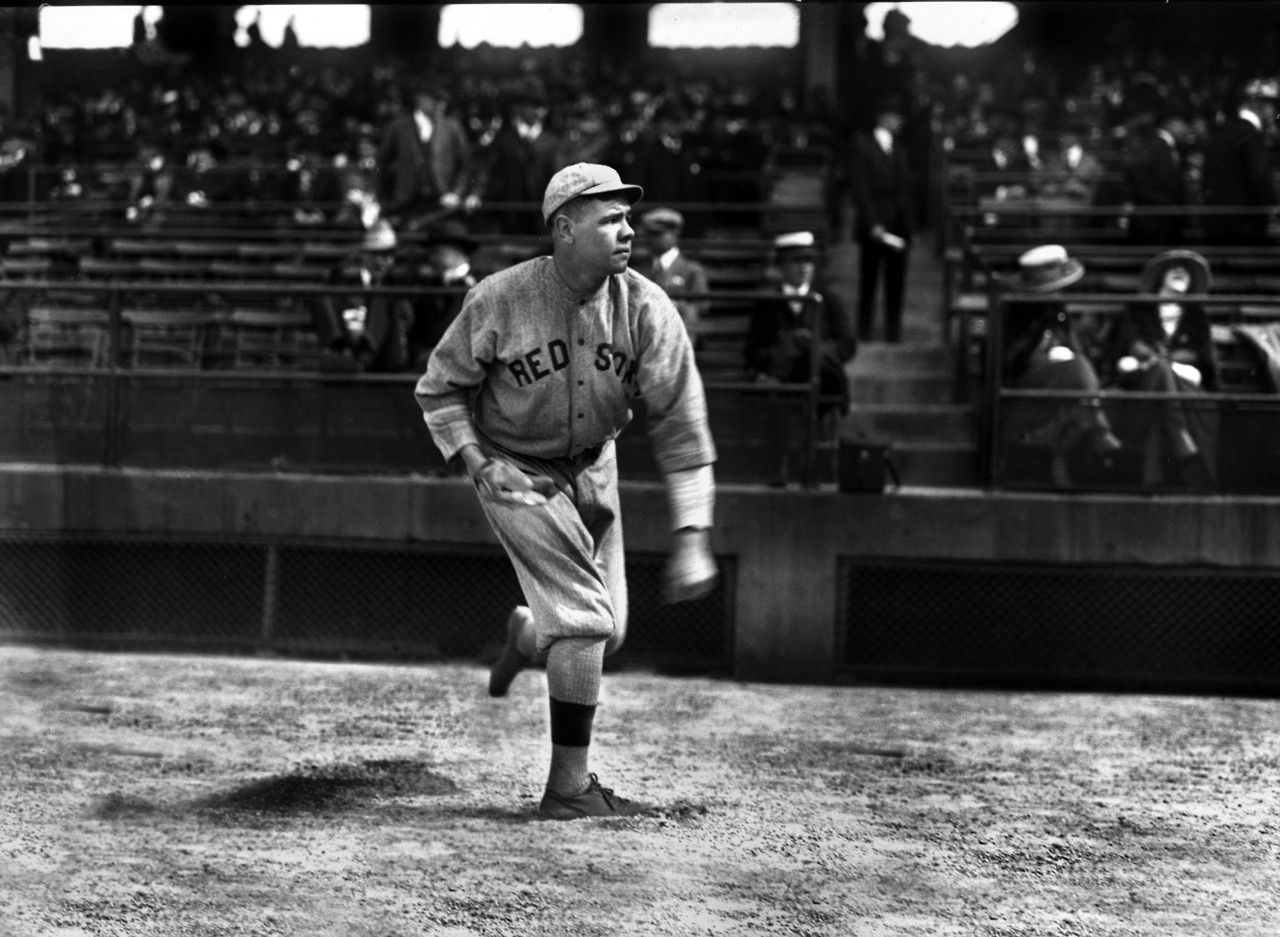
On July 23, 1917, Babe made a routine start against the Senators at Fenway Park. Babe took the mound, and after home plate umpire Brick Owens yelled out the traditional “Play Ball,” Babe proceeded to walk the first Senator batter, Ray Morgan, on four straight pitches. Ruth immediately began jawing with the umpire.
Apparently the Babe wasn’t real happy about the ball/strike calls, even after only one batter, and he let Owens hear about it. He apparently thought Owens had missed at least two strikes. “Open your eyes and keep them open!” Babe barked out from the mound. After the ump threatened to eject Ruth if he didn’t pipe down, Ruth ripped into him again: “You run me out and I will come in and bust you on the nose!” At least that was the “clean,” sanitized version reported in the Boston papers the next day.
The Babe Loses It!
Well, that’s all it took. Owens wasn’t taking any gruff from the Babe and he fired right back, “You’re outta’ here, Ruth, go take a shower.” In baseball parlance, Owens had given the Babe the old “heave-ho,” or “the thumb.” You’d have to wonder if the Babe got up on the wrong side of the bed that day. Was he possibly irritable from nursing a hangover?
We’ll never know for sure. Whatever it was—and with a totally out of character over-reaction, it had to be something other than a mere base on balls—something set him off in a big way. The next thing anybody knew, Babe was charging home plate with fists flying. Red Sox catcher Chet Thomas made a valiant attempt to intervene, but there was no stopping what now resembled a raging bull.
Babe Is Dragged Off the Field!
Babe missed with a wild left, but then landed a solid right behind Owens’ left ear. Manager Jack Barry, Red Sox teammates, and several policemen rushed to the scene attempting to restrain the big guy before he did some serious damage. According to newspaper accounts, once they had him under control, the peacemakers had to drag him off the field, kicking and screaming. And with Ruth’s size, it was no easy task. All this over ball four? And on the first batter no less?
Enter Ernie Shore…
With Ruth consigned to an early shower, manager Barry brought in 6’ 4” right-hander, Ernie Shore. Ernie was an outstanding pitcher himself, going 53-33 with a 2.12 ERA for the Red Sox from 1914-1917. He was also the Red Sox’ Opening Game starting pitcher for both the 1915 and 1916 World Series. In 1917, he was having another fine year, with a 1.97 ERA in his first 12 starts.
That day, Ernie brought his A-game. Taking over for the tossed Ruth, he then pitched the game of his life. After Ray Morgan was thrown out attempting to steal second, who could ever have predicted what was to follow?
Ernie proceeded to retire the next 26 Senators in order!
But what to call it? Including Morgan, Shore had retired 27 batters in succession, so should he be credited with a perfect game? Morgan, the one guy who reached base, wasn’t charged to Shore. Or should it just be a no-hitter? And what about Ruth? What does he get out of it?
There had never been a combined no-hitter before, so it took a while for the baseball “higher-ups” to sort things out. Initially, it went into the books as a combined perfect game. That’s the way things stood until 1991. Then baseball, in its infinite wisdom, downgraded it to a mere combined no-hitter with Ruth and Shore both getting credit, even though Shore did all the work. Ruth had been kicked out of the game after one batter, only threw four pitches, and wasn’t around long enough to even record an out!
The Babe Gets Off Easy!
All-in-all, not a good day for the Babe, but I’d say he got off rather easy. The outburst cost him a mere $100 fine, a ten-game suspension, and, by the quaint norms of the day, he was forced to make a public apology for punching out Owens. But, as we all know, better days for the Bambino would lie just ahead. The next year he starred for the Red Sox in the 1918 World Series, setting a World Series record with 29 2/3 consecutive scoreless innings that stood for 43 years until broken by Whitey Ford in 1961. And then, after the 1920 trade to the Yankees, he set the baseball world on fire.
Ernie Shore, meanwhile, hung around the majors until 1920 compiling a 65-43 record (.602) with an outstanding 2.47 ERA. He later became a sheriff in South Carolina, a position he held for 34 years. And you know he got a lot of mileage out of boasting about his “combined” no-hitter with none-other-than George Herman Ruth!
This game, the first of a doubleheader that day, was played in a brisk 1:40. There were two other future Hall-of-Famers on the field: Sam Rice of the Senators and Harry Hooper of the Red Sox. Just to complete a very bad day for the Senators, in the second game Dutch Leonard pitched a complete game against Walter Johnson, and the Senators got only four hits!
Shop MLB.com. The Official Online Shop of Major League Baseball.
Gary Livacari
Photo Credits: Featured photo colorized by Don Stokes; All others from Google search
Check out my latest books both now available on Amazon in e-book and paperback: Reflections On the 1919 Black Sox: Time to Take Another Look. All profits go to the Illinois Veterans Foundation
We are a participant in the Amazon Services LLC Associates Program, an affiliate advertising program designed to provide a means for us to earn fees by linking to Amazon.com and affiliated sites. Click here to view Amazon’s privacy policy
